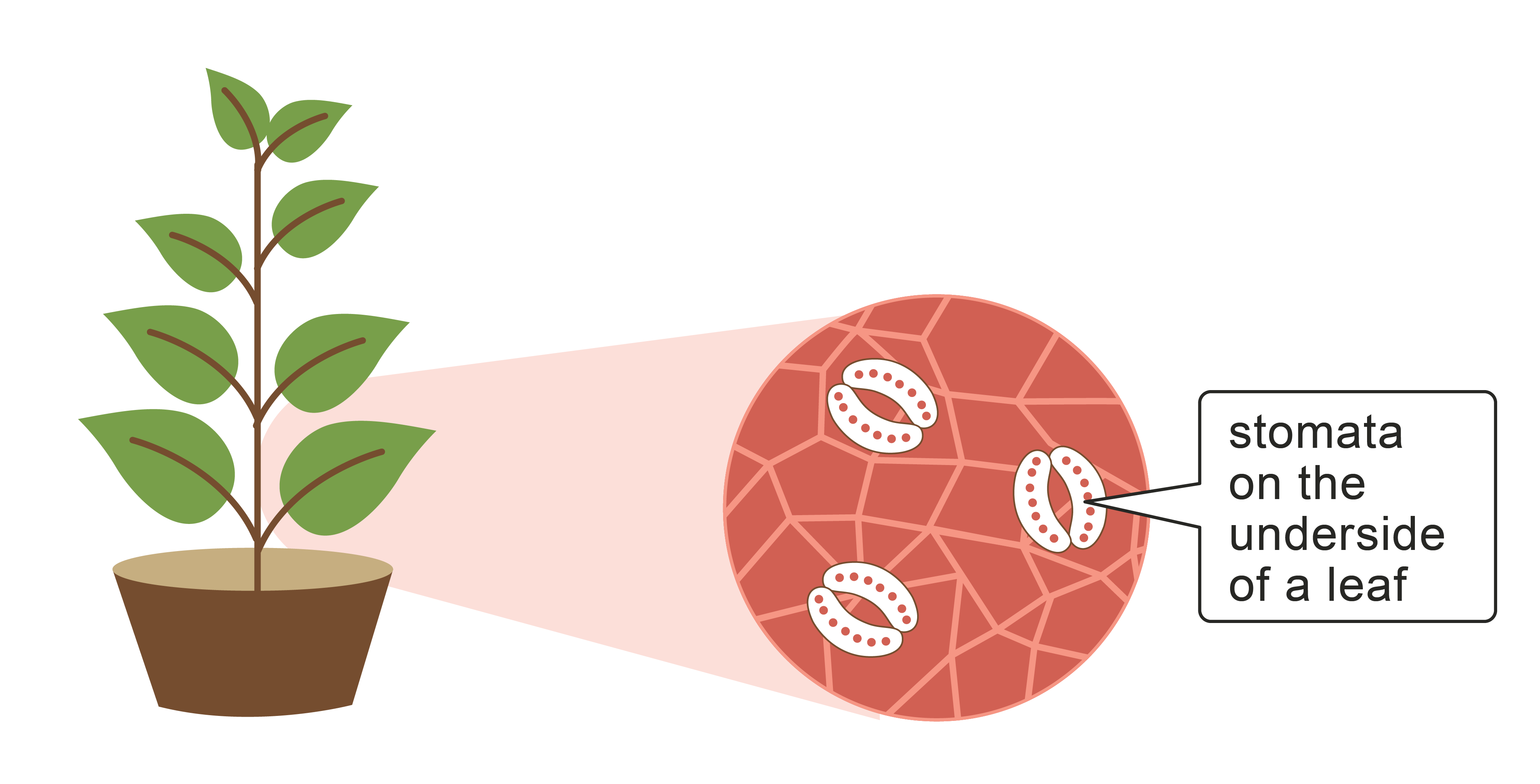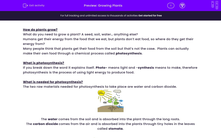What do we need to grow a plant? A seed, soil, water… anything else?
Humans get their energy from the food that we eat, but plants don’t eat food, so where do they get their energy from?
Many people think that plants get their food from the soil but that’s not the case. Plants can actually make their own food through a chemical process called photosynthesis.
What is photosynthesis?
If you break down the word it explains itself. Photo- means light and -synthesis means to make, therefore photosynthesis is the process of using light energy to produce food.
What is needed for photosynthesis?
The two raw materials needed for photosynthesis to take place are water and carbon dioxide.

The water comes from the soil and is absorbed into the plant through the long roots.
The carbon dioxide comes from the air and is absorbed into the plants through tiny holes in the leaves called stomata.

The other thing needed for photosynthesis to take place is light energy. Where do you think this light energy comes from?
The light energy is changed into chemical energy by the green pigment in the leaves called chlorophyll.
What is produced?
The food made during photosynthesis is called glucose (sugar). This glucose can then be stored in the plant as starch.
The other product of photosynthesis is oxygen which is released from the plant through the stomata in the leaves.
Oxygen is a colourless gas. We can't really tell if it's produced just based on how it looks! One way we can be sure is to do a test in the lab. We can collect the oxygen in a test tube, for example, and hold a glowing wooden splint in it (a glowing splint is one that was burning and then extinguished). The glowing splint will relight if oxygen is present.
Is photosynthesis important?
If you're reading this, then you're alive and you're alive because of photosynthesis! It provides all your food and all your oxygen. There's oxygen in the atmosphere because it's a waste product of this process and since photosynthetic plants are at the base of pretty much every food chain, the Sun energy they lock into the sugars they make feeds everything. Is it important? Just slightly!
The equation
All of this information can be simplified into a short equation.
This equation can be read as 'carbon dioxide and water, in the presence of light energy and chlorophyll, produces oxygen and glucose.'
See if you can learn this equation because it is really important!









